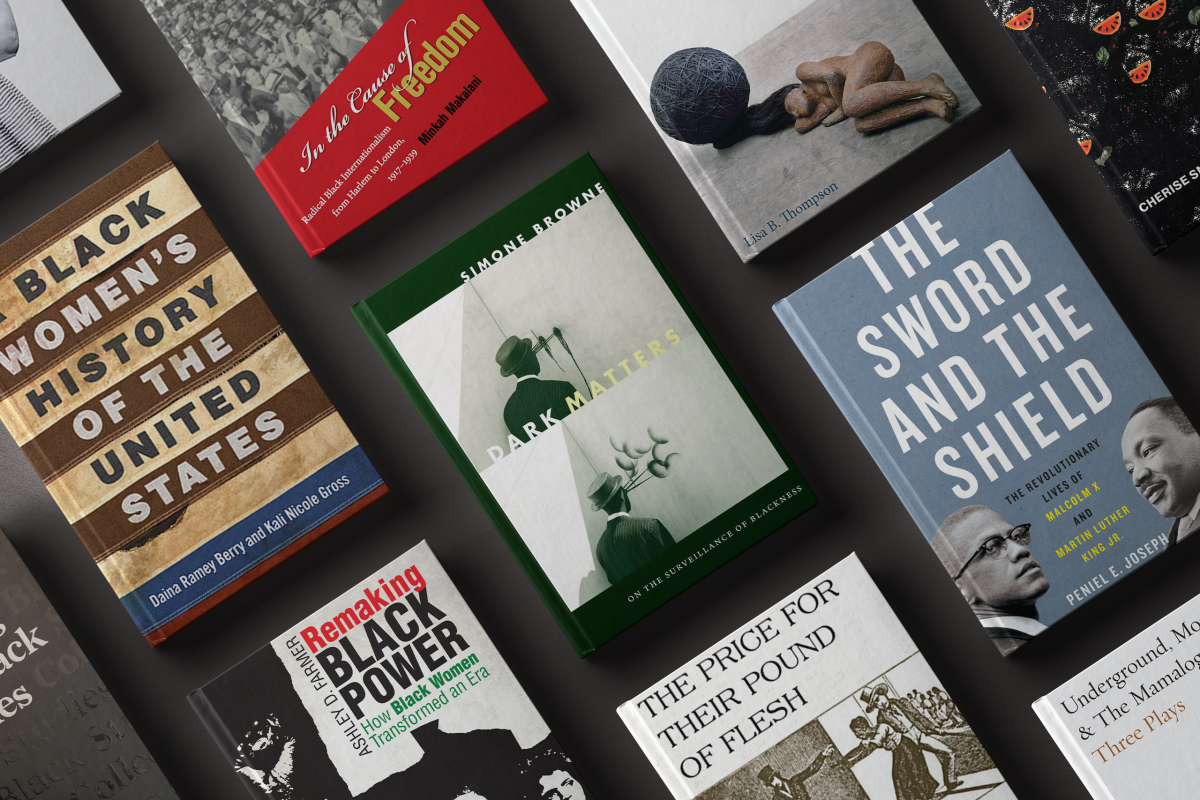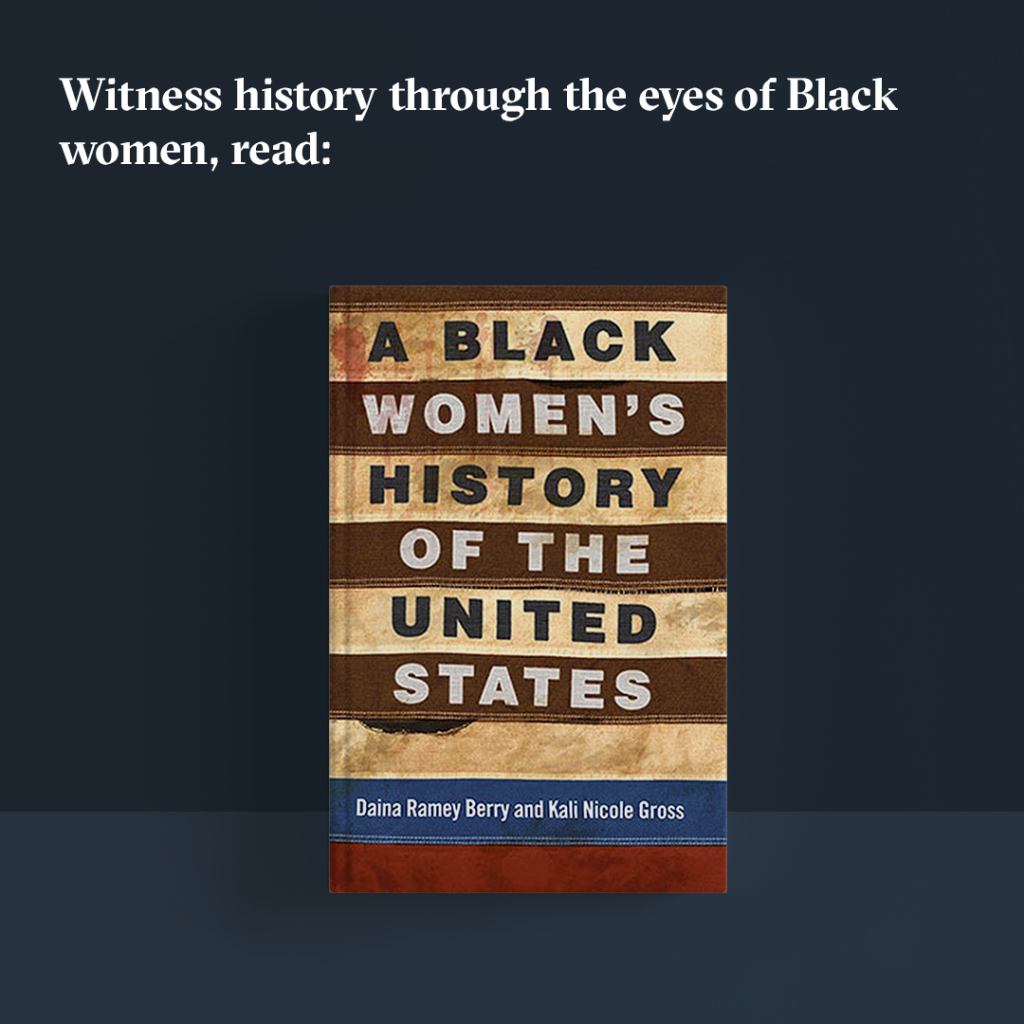
A Black Women’s History of the United States
By Daina Ramey Berry, the Oliver H. Radkey Regents Professor of History and chair of the History Department
Describe your book:
This book is a comprehensive study of Black women’s experience in the United States, bringing the reader from 1600 to the present.
What do you hope readers will learn?
I hope that readers walk away from this book with a better understanding Black women’s experience in the United States with all of its richness.
Share a quote you’ve bookmarked:
“African American women have remained underprotected and overpoliced, beginning with the colonial laws that treated them as things rather than human beings, to more recent disparities that rendered them as largely ignored victims of the War on Drugs, and mass incarceration.”

Dark Matters: On the Surveillance of Blackness
By Simone Browne, associate professor of African and African diaspora studies
Describe your book:
Dark Matters shows how contemporary surveillance technologies and practices — such as biometric technologies and the post-9/11 airport security practices — are informed by the long history of racial formation and by the methods of policing Black life under slavery, such as branding, runaway slave notices and lantern laws.
What do you hope readers will learn?
I hope that readers finish the book by continuing to think critically, and even be a bit suspicious, when it comes to new surveillance technologies that get marketed as fun or convenient or for security and policing. Whether that be Nextdoor, TikTok, biometric airport screening, COVID-19 contract tracing apps, Face ID, Alexa or some other virtual assistant AI device. What happens to that data? How is it stored? Is it shared, traded, sold or rented out for profit? What potentially massive profiles are we creating about ourselves through our Linkedin profiles, our Etsy and Yelp reviews, our Instagram feeds? These are important questions when it comes to surveillance in our lives.
Share a quote you’ve bookmarked:
“Surveillance is nothing new to Black folks. It is the fact of antiblackness.”

Beyond The Black Lady: Sexuality And The New African American Middle Class
By Lisa B. Thompson, professor of African and African diaspora studies
Tell us about your book:
This is an exploration of the ways contemporary cultural producers and figures challenge the perception of Black womanhood.
What do you hope readers will learn?
I hope readers learn that contemporary African American women novelists, playwrights, filmmakers, memoirists and public figures are well aware of dominant racial and gender stereotypes but refuse to allow those stereotypes to determine how they present Black womanhood in their work.
Share a quote you’ve bookmarked:
“Undoubtedly, watching Anita Hill testify before the Senate in October 1991 also inspired both [my play] Single Black Female and Beyond the Black Lady. I wondered how the American public would have reacted if Hill had had a very different past — one with less defensible sexual and romantic choices. My answer to that question chilled me. I doubted that the political left would have defended Hill with the same vigor. I also felt that the conservative right would have relied even more on racial stereotypes in order to disparage her character. I was most troubled by the thought that neither the right or left seemed to know exactly what to make of Hill.”
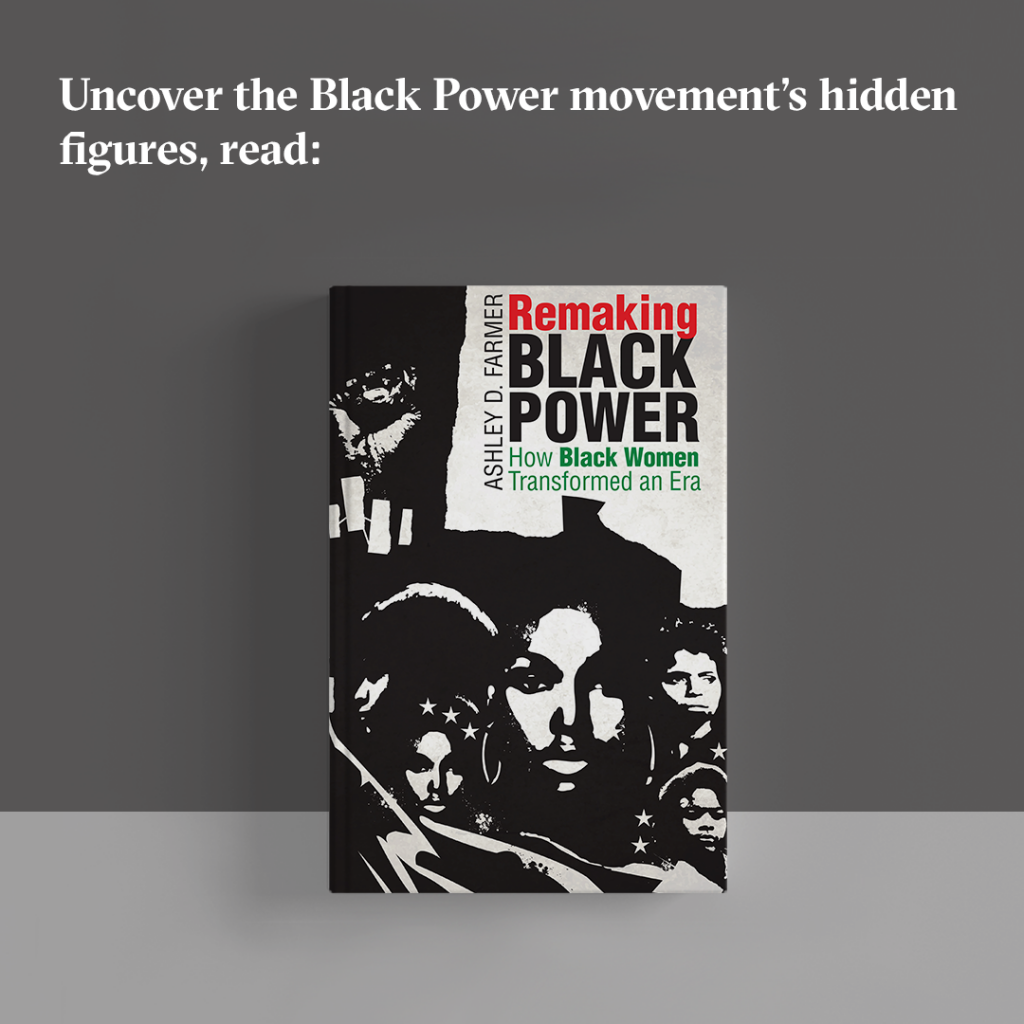
Remaking Black Power: How Black Women Transformed an Era
By Ashley Farmer,assistant professor of history and African and African diaspora studies
Describe your book:
This is the first comprehensive history of Black women’s activism in the Black Power movement. It examines the possibilities and limitations of Black women’s activism and visions of liberation and it offers a more nuanced understanding of Black Power beyond the works by and about the select few men who are more commonly recognized as the movement’s leaders.
What do you hope readers will learn?
Black women were key theorists and organizers of the Black Power Movement.
Share a quote you’ve bookmarked:
“As we look for insight into how to organize against mass incarceration, sexual assault and police violence, and the myriad other injustices that black men and women face, we owe it to ourselves and those on the front lines to develop more nuanced and differentiated analyses of Black Power activists’ freedom dreams… To not do so is to run the risk of foreclosing imaginative and productive avenues for future visions of black liberation and to reinforce the idea that Black Power was little more than an abstract, disparate, and degenerative movement.”
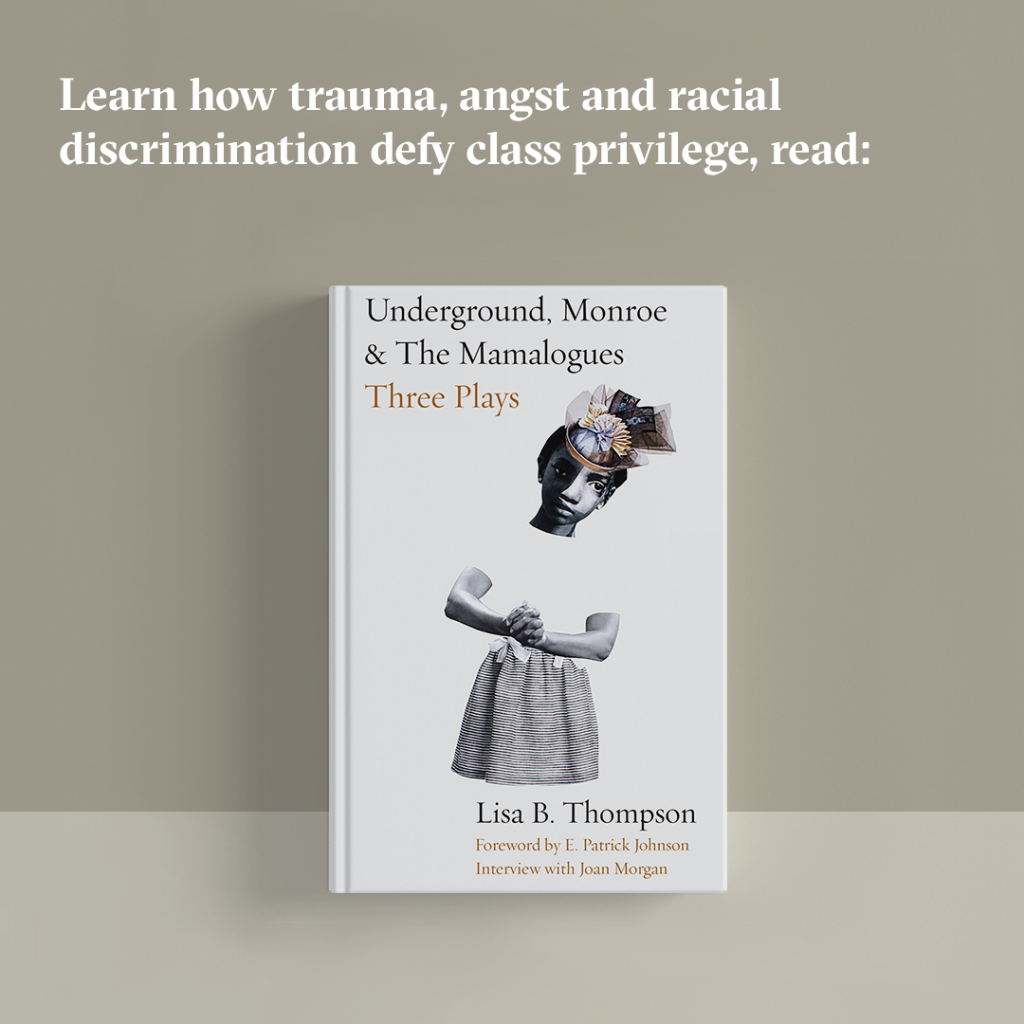
Underground, Monroe, and The Mamalogues: Three Plays
By Lisa B. Thompson, professor of African and African diaspora studies
Describe your book:
This is a collection of plays that explore the Black middle class experience in the U.S. from various vantage points and eras.
What do you hope readers will learn?
I hope readers and audiences learn that class privilege does not protect African Americans from racial discrimination, trauma or angst.
Share a quote you’ve bookmarked:
A quote from Underground: “You ain’t a man. No, you’re a slave trying to buy your freedom. You think you can buy yourself out of slavery? If you can, well good for you, but how can you enjoy that so-called freedom if your brothers and sisters, your woman, your mama, cousins, and friends are still in bondage? You can’t buy everybody out of oppression. That’s never worked. Somebody always gotta stay behind. Even the Underground Railroad couldn’t take everybody for a ride.”

The Sword and the Shield: The Revolutionary Lives of Malcolm X and Martin Luther King Jr.
By Peniel E. Joseph, founding director of the Center for the Study of Race and Democracy, Barbara Jordan Chair in Ethics and Political Values and professor in the Department of History and the LBJ School of Public Affairs
Describe your book:
This book offers a definitive history of Malcolm X and Martin Luther King Jr, upending clichés and transforming our understanding of the two most iconic Black activists of the civil rights era.
What do you hope readers will learn?
Malcolm X and MLK are both revolutionaries who began as adversaries, grew into rivals, and came to understand and respect one another.
Share a quote you’ve bookmarked:
“Malcolm X and Martin Luther King Jr. came of age in a political landscape that crushed dreams of black dignity and openly rejected the idea of black citizenship.”

In the Cause of Freedom: Radical Black Internationalism from Harlem to London, 1917-1939
By Minkah Makalani, associate professor of African and African diaspora studies and director of the Warfield Center
Describe your book:
It’s a story of early 20th century radical Black internationalism that explores the global contours of African diasporic struggles for freedom and against empire — colonialism, racial oppression, coloniality.
What do you hope readers will learn?
I would hope that anyone reading this work would come away with a better sense of the complexity and political diversity of Black political thought, and the diverse organizational approaches that Black radicals have taken in their struggles for freedom.
Share a quote you’ve bookmarked:
“The African Blood Brotherhood and the International African Service Bureau encapsulate the intellectual and political complexities of interwar radical black internationalism. Although both organizations were short-lived, their respective roles in early-twentieth-century African diasporic politics help limn intellectual and political complexities and provide much of the focus of the story told here — how the motivations, agendas, and structures of radical black internationalism took form within black social movements and then created room in organized Marxism for the emergence of a black international.”
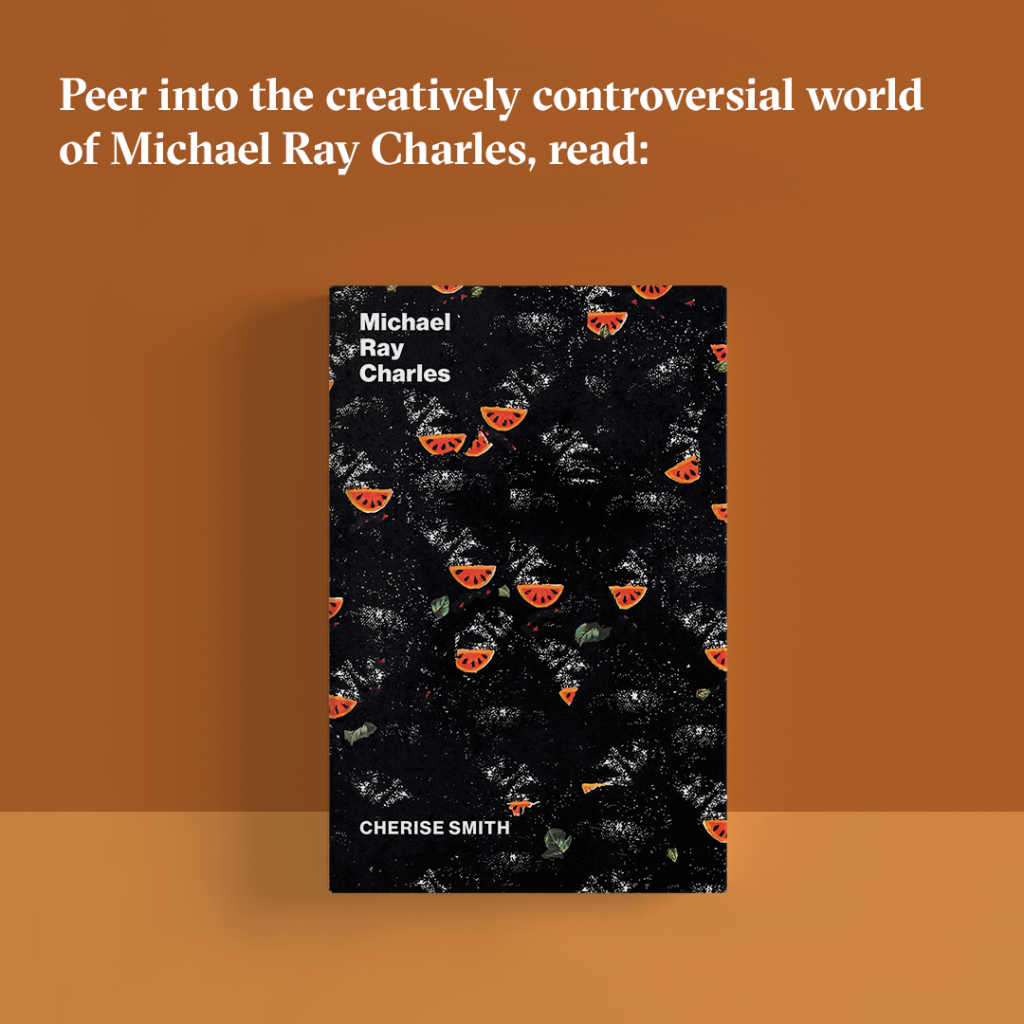
Michael Ray Charles: A Retrospective
By Cherise Smith, chair of the African and African Diaspora Studies Department and executive director of the Art Galleries at Black Studies
Describe your book:
This book focuses on the art of Michael Ray Charles, who gained prominence in the 1990s for works that engaged American stereotypes of Black people. For an artist like Charles who has a background in advertising, the visual language of such popular media is appealing, as is the imagery it employs. Couple that with an archivist’s inquisitiveness and image recall, and the grounds are laid for an artistic practice that appropriates found images, questions the narratives they circulate, and critiques the social, political and economic vicissitudes of such circulation. As Charles once said, “I wanted to use something familiar and change it into something strange.”
What do you hope readers will learn?
Charles found himself ensnared in controversy when the ethics of using images associated with anti-Black racism were questioned. Some critics deemed his use of negative imagery reprehensible: re-circulating such icons demonstrates “selling out,” peddling in negative imagery to make a buck or game the system and creating art that perpetuates abuses against Black people. I hope that readers will come to understand Charles’ appropriation of the stereotypical material as a deliciously thorny provocation that points its white-gloved finger at all viewers, regardless of their ethno-racial designations, because of their deep engagement with consumer culture.
Share a quote you’ve bookmarked:
“The stereotypes that are associated with black people–distilled and deployed in contemptible collectibles among other venues–assist in maintaining hierarchies that are part and parcel of American society and culture…Charles is not unique in his use of the materials. Rather, he follows in a long line of artists and thinkers who have engaged stereotypical iconography in order to understand, transform, or resist them.”
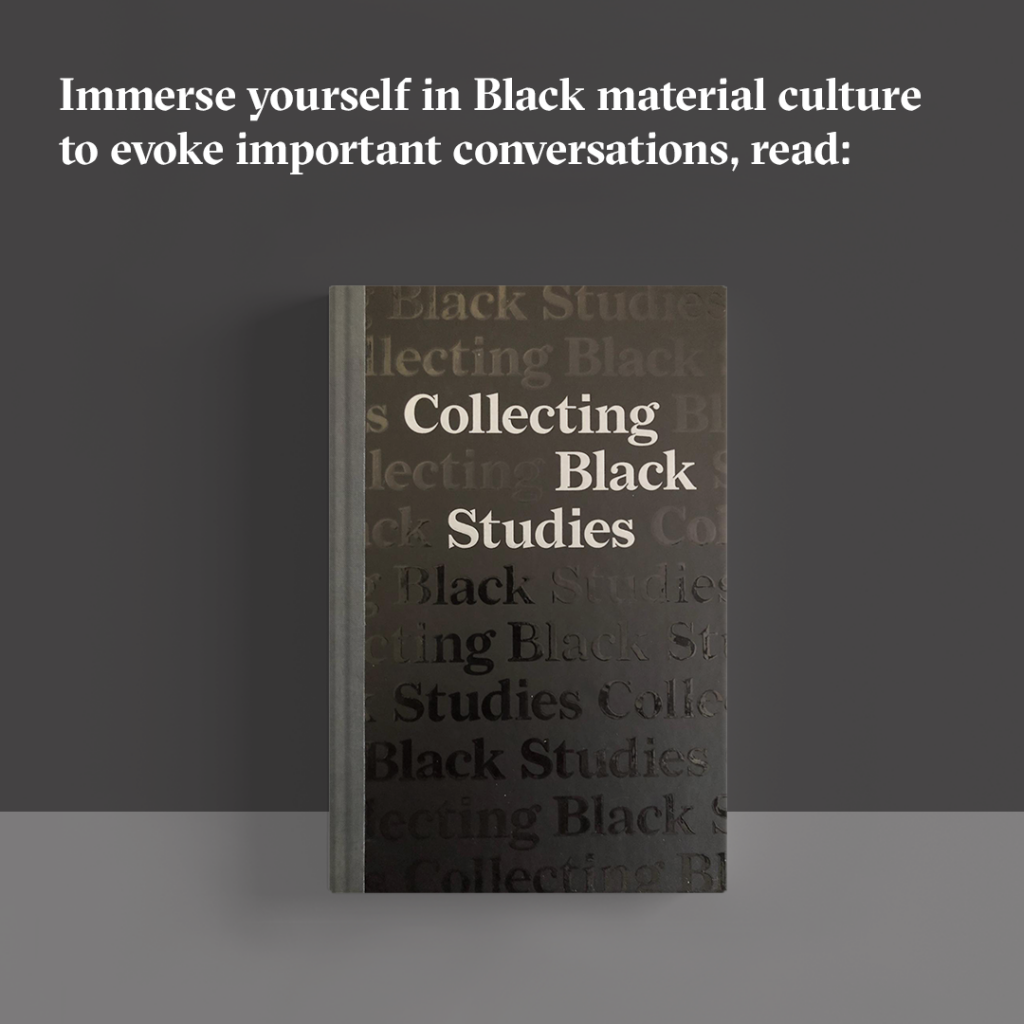
Collecting Black Studies: The Art of Material Culture at The University of Texas at Austin
Edited by Lise Ragbir, director of the Art Galleries at Black Studies; and Cherise Smith, chair of the African and African Diaspora Studies Department and executive director of the Art Galleries at Black Studies
Describe your book:
What began as an effort to prevent the neglect and potential loss of hundreds of African objects at The University of Texas at Austin has evolved into one of the most significant collections on campus. Today Black Studies at UT Austin boasts approximately 900 objects from sub-Saharan Africa, more than 200 contemporary works from African American and Afro-Caribbean artists, and more than 100 pieces jointly held with other collecting entities on campus, adding a diverse richness to the overall collections.
Collecting Black Studies gathers and presents these holdings and prominently features five Black artists with deep relationships to Texas. Scholars and curators examine how John Biggers, Michael Ray Charles, Christina Coleman, Angelbert Metoyer and Deborah Roberts contributed to the Black Studies collections, to art history, and to the culture of our state and beyond.
What do you hope readers will learn?
UT Austin has a long and rich history with many hidden treasures. Black Studies’ art collections speak to the range of narratives which have passed through the campus, as well as highlight the significance of Black material culture at UT, and beyond.
Share a quote you’ve bookmarked:
“For people of African descent in the Americas, acts of resistance are an important part of a collective history. Generation after generation has forged ahead in the face of often harrowing conditions, propelled by a combination of strength, will and hope toward something better — toward the abolition of slavery, the dismantling of Jim Crow laws, and perhaps, one day, the end of racialized mass incarceration and the dominant societal pathology of Black people as criminals and deviants. With depictions of picket signs and nooses, of a target and a raised fists, this section honors the ethos of resistance to which Black Studies pays particular respect.”

The Price for their Pound of Flesh: The Value of the Enslaved, from Womb to the Grave, in the Building of a Nation
By Daina Ramey Berry, the Oliver H. Radkey Regents Professor of History and chair of the History Department
Describe your book:
This is a study of enslaved people and their valuation in market settings, but it is also a book about the ways enslaved people rejected the commodification of their bodies.
What do you hope readers will learn?
I hope the readers hear from enslaved people featured in this book and that they learn about the strength and resilience of enslaved people’s souls.
Share a quote you’ve bookmarked:
“Enslaved people were valued in life and death. But because they were people and property, multiple sets of values encompassed them and were placed on their bodies.”
